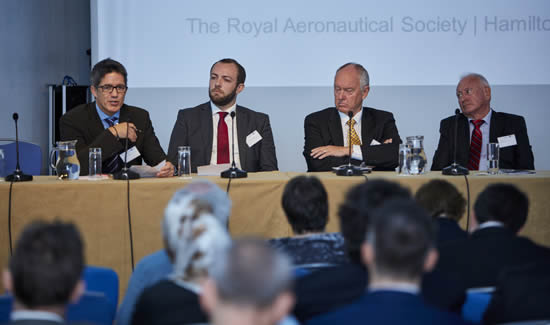|
A panel consisting of
business aviation associations at SETops 2017 agreed the success of
single engine turboprops (SETs) depends primarily on the public’s
perception of their safety.
Murray Law,
board member of the British Business and General Aviation (BBGA)
association, kicked off the session highlighting the Brazilian
market as an example. While there have been no fatalities due to
mechanical failure of SET aircraft, there have been 14 owing to
pilot error and weather. While the aircraft themselves are safe,
improvements must be made in other areas to persuade people to use
them, he said.
Capt. Nigel Harris,
representing BACA and speaking from his experience as a pilot and
CEO of Montserrat Airways in the Caribbean - which operates a fleet
of Islanders, Twin Otters and Cessna 402s said he would love to see
these turbine singles on the Island with their sophisticated big jet
avionics. His passengers are mostly high net worth individuals, so
when assessing the viability of SETs a big consideration would be
whether his customers’ insurance companies would let them fly on
these new aircraft.
Kyle Martin,
Director of Regulatory Affairs for the General Aviation
Manufacturers Association (GAMA), which has been working towards
SETops for 25 years, said that the issue is that regulations have
typically been defined by the perception of safety rather than a
data-driven approach to safety. Martin believes the latter is key to
proportionate regulations regarding SET aircraft.
 |
|
(L to R):
Brandon Mitchener, EBAA; Kyle Martin, GAMA:
Murray Law, BBGA and Nigel Harris,
representing BACA. Photo: Paul Cordwell |
Murray Law challenged
that the regulator has a difficult job matching performance with
engines and airframes, but Martin revealed there is precedent for
securing certification for operations with new airframe/engine
combinations (specifically Pratt & Whitney’s Canada PT6A) from the
outset – something which was achieved for ETOPs which he experienced
working at Rolls Royce. The key, he suggested, lies in cyclic engine
testing on the ground, flight testing and route-proving, but that
once in operation, constant feedback to the regulators was
necessary.
Martin added that
electronic flight bag technology with integrated Garmin avionics,
for example, will go a long way to improving the safety of SET
aircraft in Europe just as it has done in the US, by helping with
navigation and weather.
With the discussion
turning towards SET aircraft providing a new market for business
aviation, Adam
Twidell, CEO
of PrivateFly, asked what was being done to stop uneducated
passengers bypassing AOC-registered aircraft and opting to use the
grey charter market and cost-sharing aircraft. Capt Nigel Harris
acknowledged this was a glaring problem with single- ngine pistons
in the Caribbean.
The suggestion that
these new turbine engine singles were given ‘gold status’ like the
Wyvern or Argus stamp of approval, Murray Law said that the lay
public wouldn’t be aware of such endorsements. However, a strong
communications campaign moving forward would go a long way on the
perception issue of SETops and safety.
Brandon Mitchener,
CEO of the European Business Aviation Association (EBAA), said the
Association is looking at launching a new campaign at the 2018 EBACE
event which focuses on a broader definition of business aviation
than just ‘private jets.’ Brandon asked delegates to share their
stories, which will serve as a good start in terms of changing
people’s perceptions.
Newly appointed EBAA
COO Robert Baltus who has just joined EBAA from NetJets sister
company Executive Jet Management and latterly Qatar Executive joined
Brandon at this event specifically to learn more about this upcoming
sector. |
